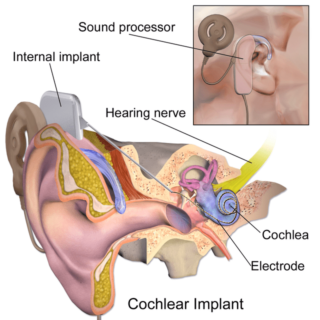How do Cochlear Implants work? What Impact Do They Have on a Child’s Hearing?
What is a cochlear Implant?
An electronic medical device called a cochlear implant takes the place of the inner ear’s destroyed function. Cochlear implants replace the function of injured inner ear (cochlea) elements in order to transmit sound impulses to the brain, as contrast to hearing aids which amplify sounds.
The most crucial factor is early diagnosis. As soon as feasible, management of a deaf and mute youngster should be instituted. If a cochlear implant is placed before age 3, the likelihood of success increases. With increasing child age, success rate declines.
How we hear?
The eardrum vibrations caused by sound waves move the chain of tiny bones (the ossicles – malleus, incus and stapes) in the middle ear transferring the sound vibrations into the cochlea of the inner ear. This is where the streams of nerve impulses are converted into meaningful sound.
Parts of ear:
- Outer Ear :
- Middle Ear: Converts sound waves in to vibrations.
- Inner Ear (Cochlea): converts vibrations into electrical impulse. Theses electrical impulse travel to brain via nerve of hearing (Cochlear nerve)
What is cause of Hearing Loss in children?
As the cases of children being unable to hear pile up in Gwalior, it is necessary to know what causes the loss of hearing at such an early age. In children hearing loss can be congenital (from birth) or acquired (after birth). Acquired can be due to various infections or trauma, etc.
Hearing loss can also be classified as per language development as follows
- Pre-lingual –hearing loss developed before child could start speaking, it can be either congenital (from birth) or acquired (after birth).
- Post-lingual – hearing loss developed after child started speaking. It means it is acquired.
Cause of hearing loss is any defect in the transmission of sound through the ear. It can be
- Conductive – Caused by defect in middle or external part of ear. It can usually be treated by some medications. Less frequently a surgery is required to correct this type of hearing loss
- Sensory-neural – Caused by defect in nerve of hearing or cochlea. Mild to moderate hearing loss can be treated by hearing aid whereas severe to profound hearing loss requires Cochlear Implant surgery
Burden of Hearing loss?
In US Significant bilateral hearing loss is present in ~1 to 3 per 1000 newborn infants in the well-baby nursery population, and in ~2 to 4 per 100 infants in the intensive care unit population.
In India, 63 million people (6.3%) suffer from significant auditory loss. Four in every 1000 children suffer from severe to profound hearing loss. The estimated prevalence of childhood onset deafness to be 2%
How to assess Hearing loss in a new born?
Detection of infant hearing loss requires universal screening of all infants. Screening by high-risk registry alone (eg, family history of deafness) can only identify ~50% of newborns with significant congenital hearing loss. Reliance on physician observation and/or parental recognition has not been successful in the past in detecting significant hearing loss especially in the first year of life.
Tests for screening include otoacoustic emissions (OAE) and auditory brainstem response (ABR / BERA). Both test are noninvasive, quick, and easy to perform, although each assesses hearing differently. Aim is to initiate necessary intervention by 6 months of age.
The Agrawal Hospital and Research Institute promises end to end cochlear implantation services in Gwalior and nearby regions. Dr. Rahul Agrawal is a trained professional and an ENT surgeon who has expertise in cochlear implantation.




